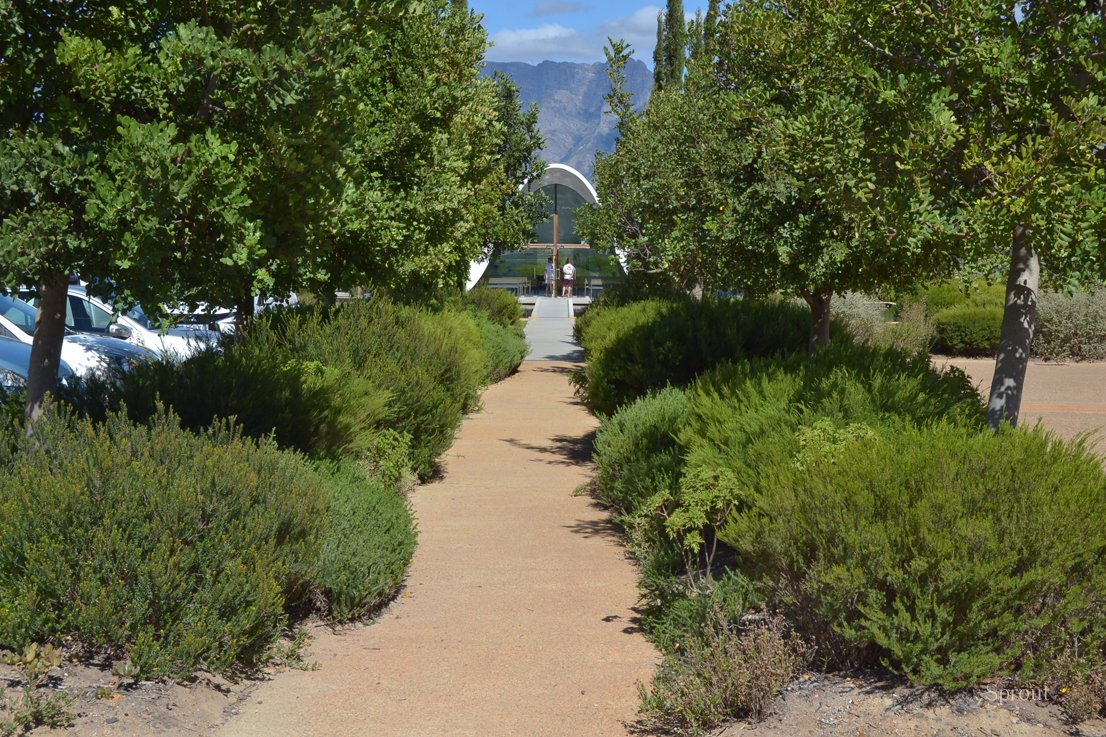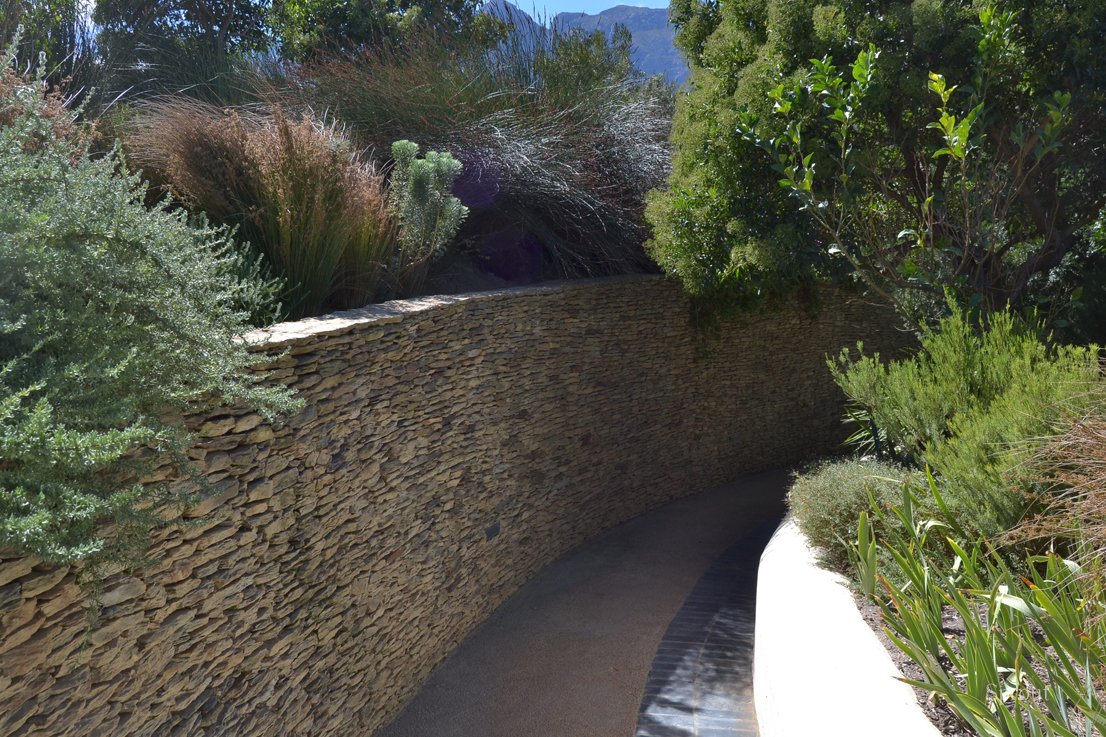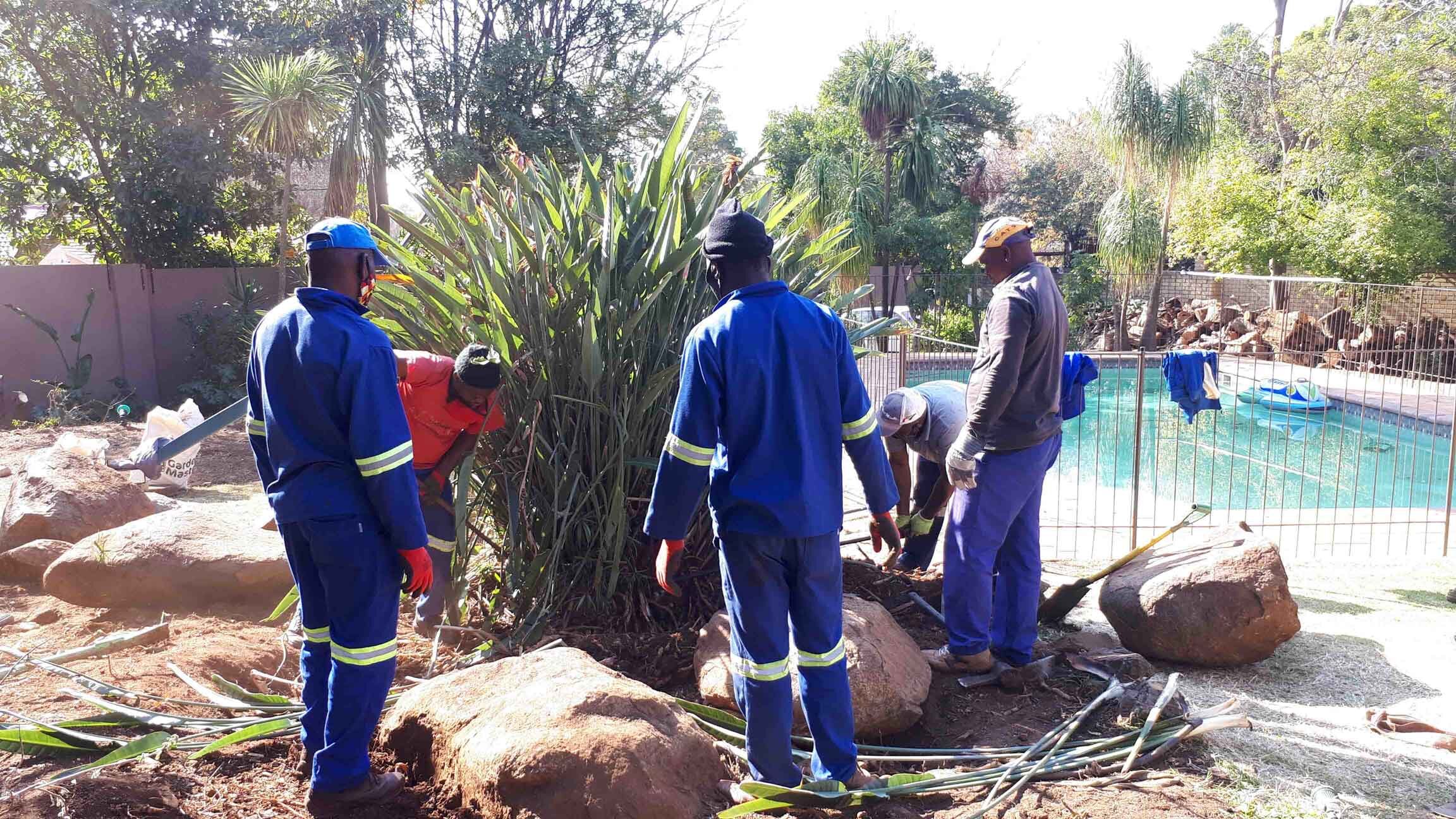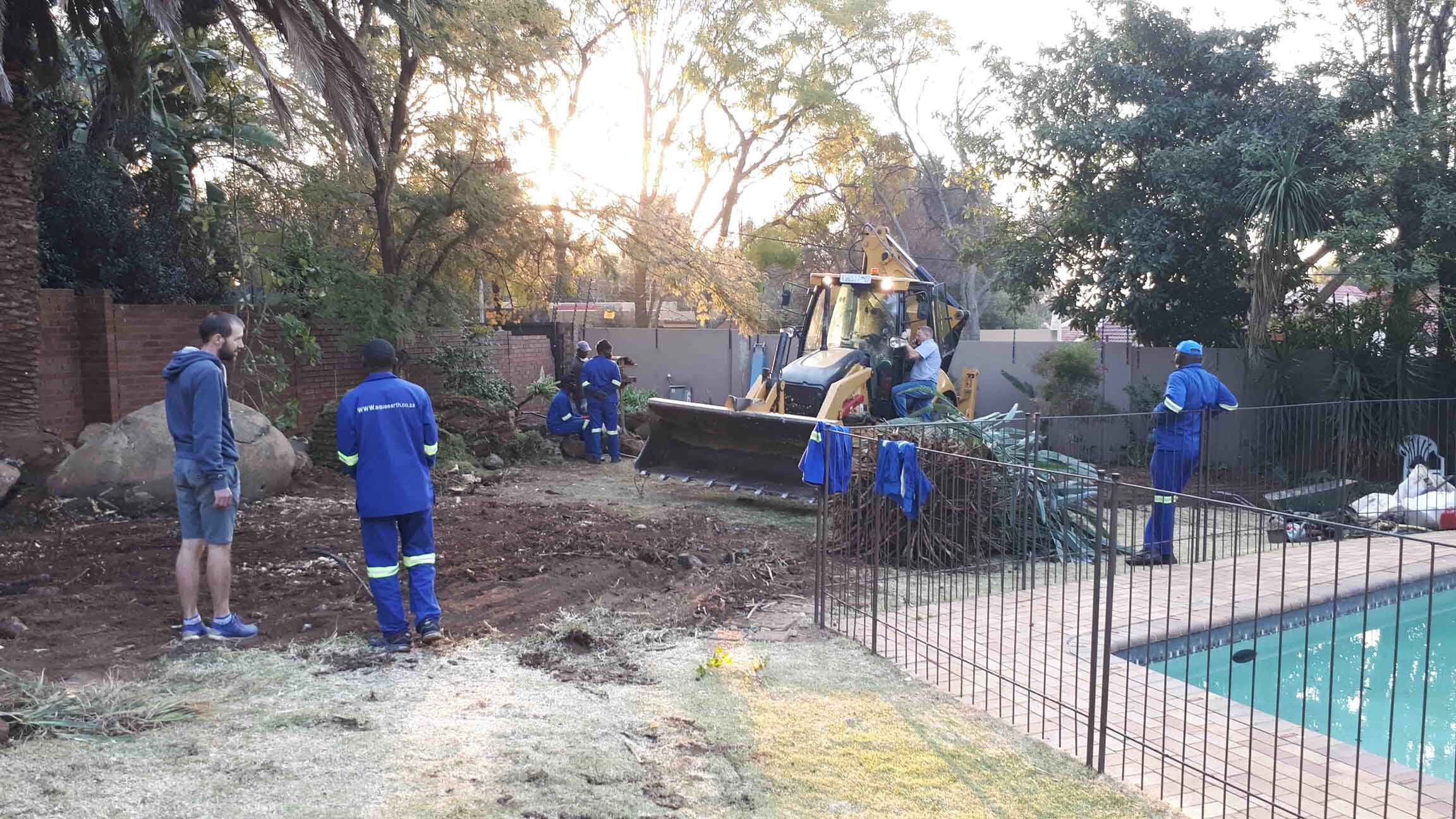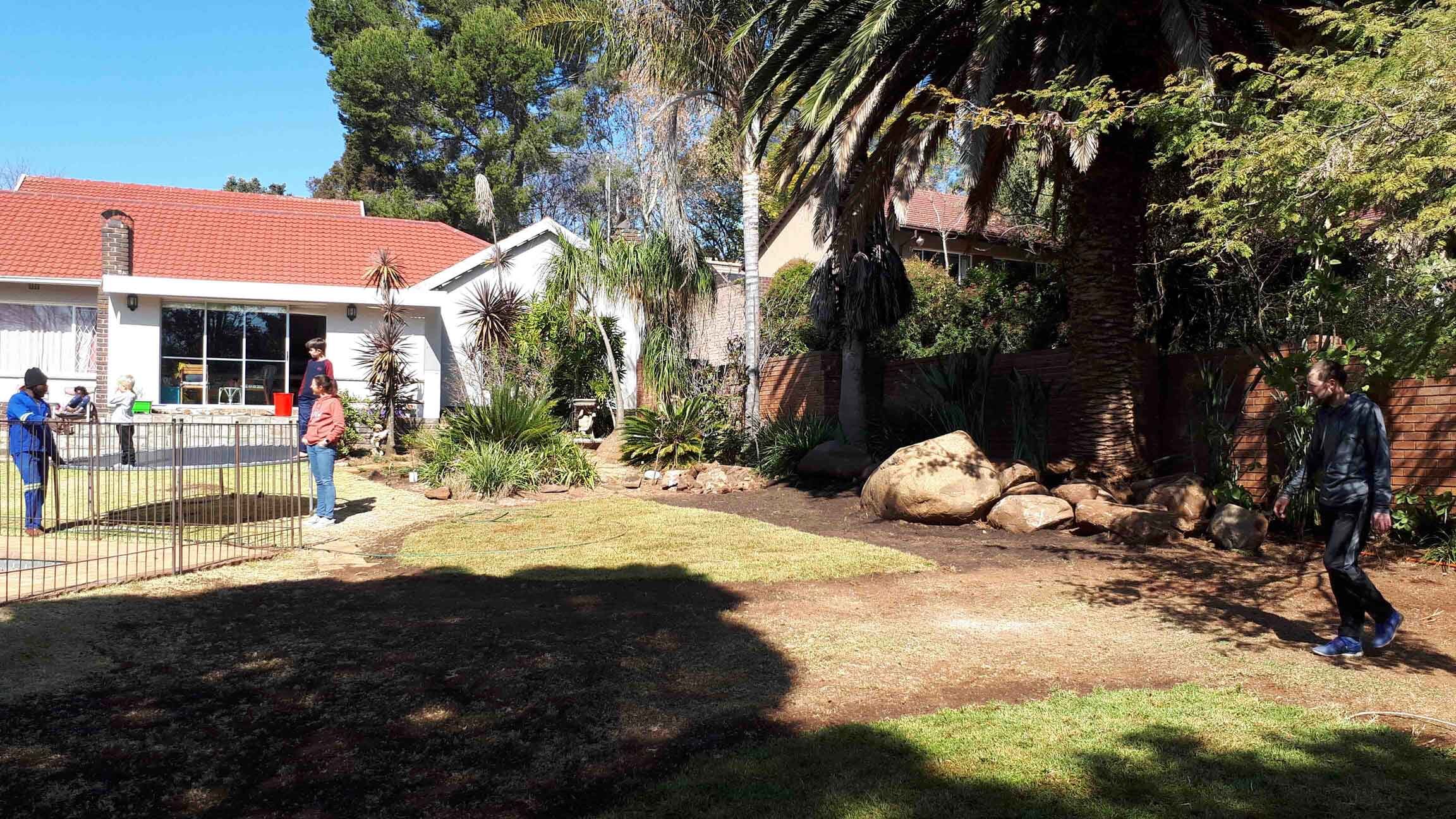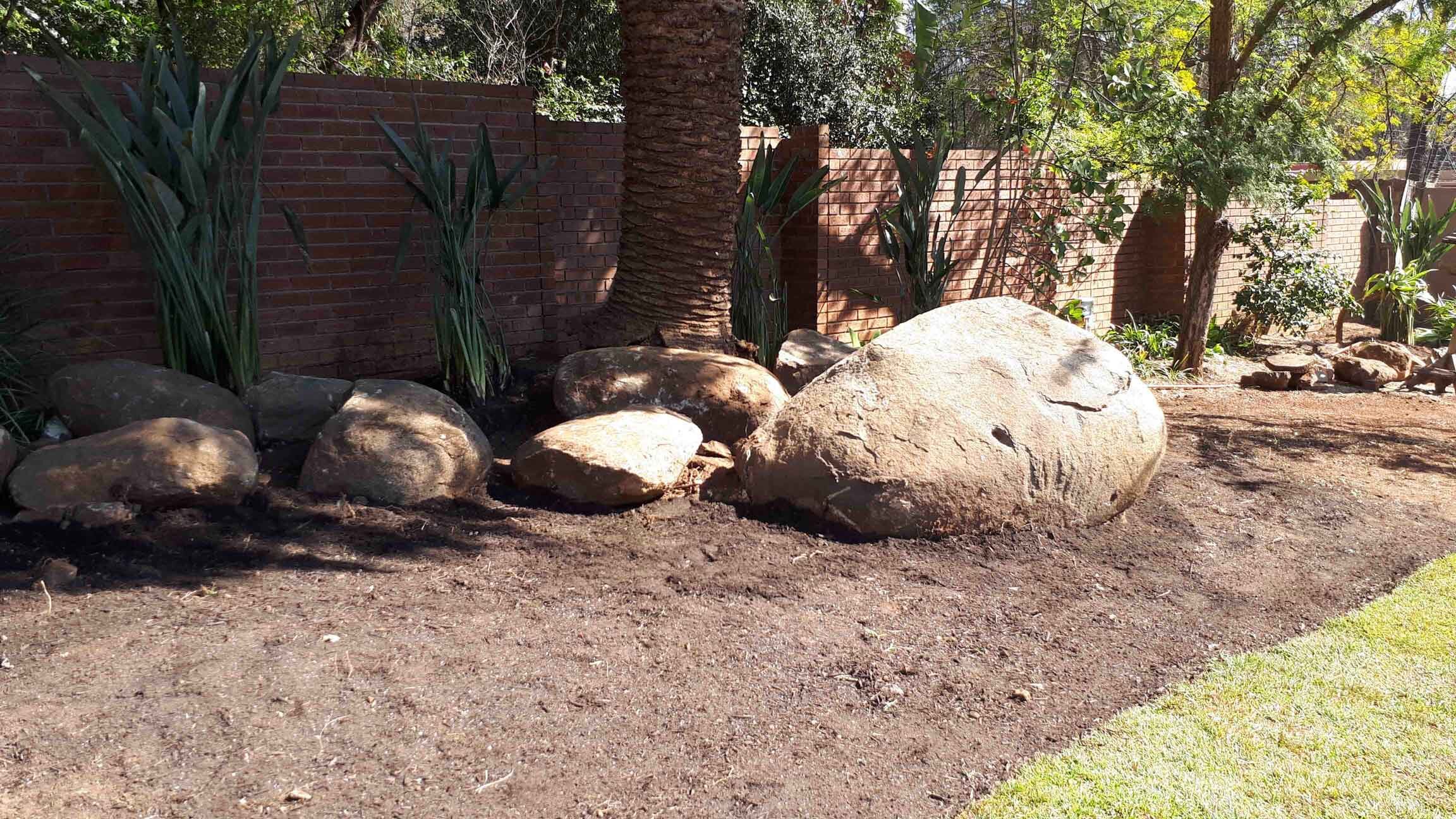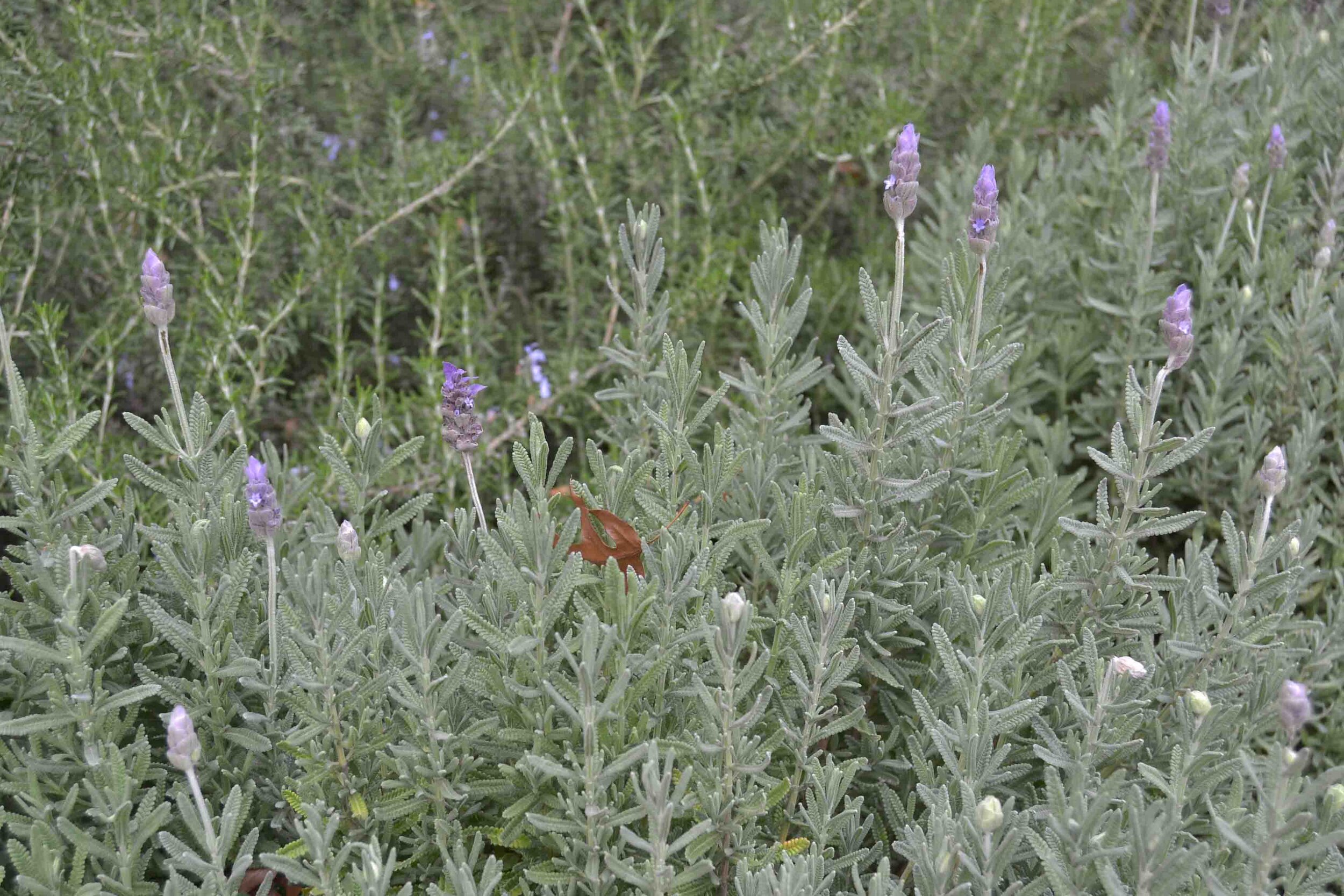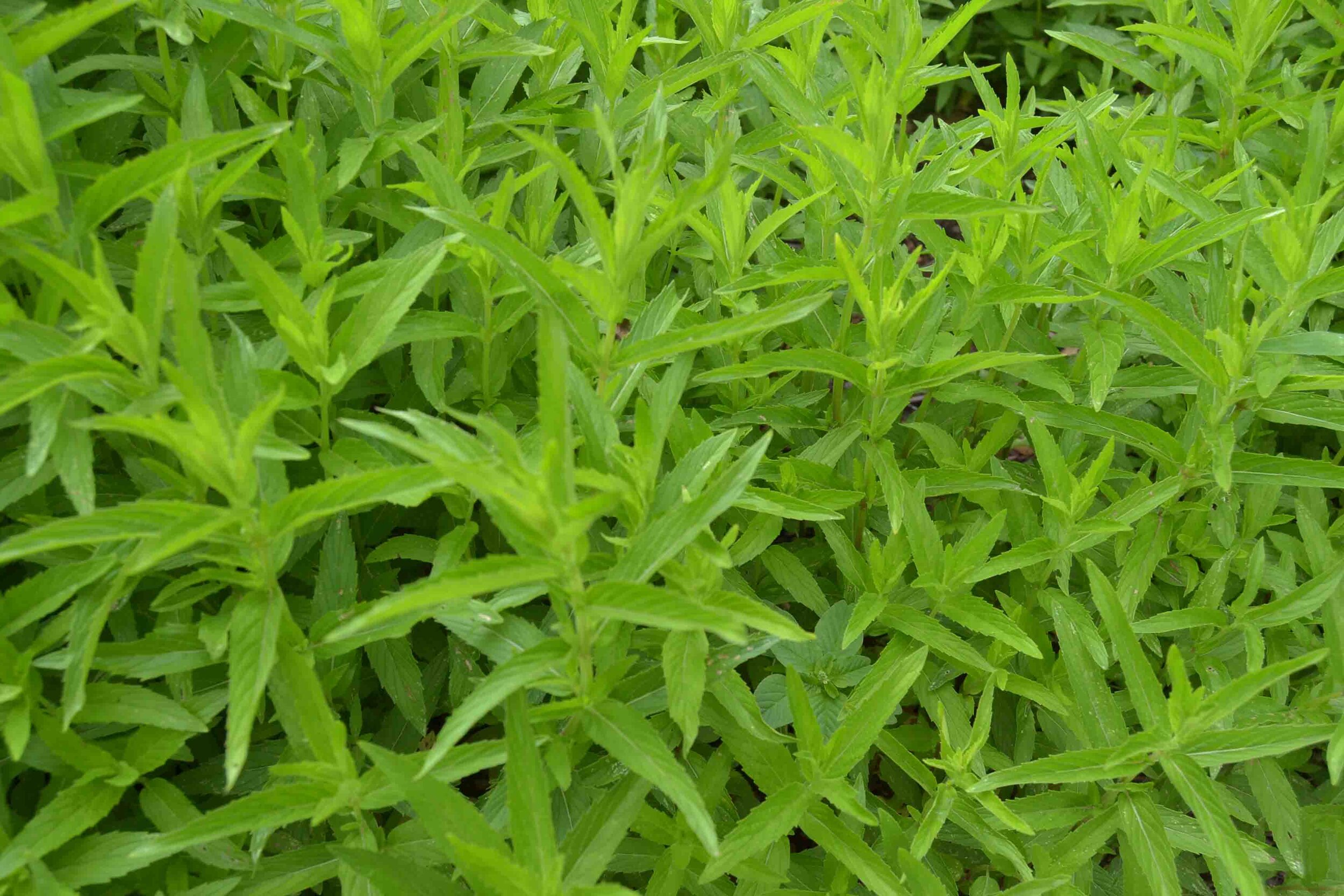Bosjes is a truly amazing farm with immense beauty and we spent a lovely morning exploring the gardens and being inspired by the diversity and beauty of the South African landscape.
Bosjes is a privately owned family farm situated in the Breedekloof Valley and surrounded by the picturesque Waaihoek and Slanghoek mountains. It produces olives, wine, grapes, peaches and proteas. The farm has several attractions including Bosjes kombuis, a contemporary restaurant with deli, tea garden and children’s play area as well as luxury accommodation and a Spa.
The chapel sits on the main axis of the gardens
The Chapel
The chapel is the focal point of the farm and is a dramatic yet serene icon. The white organic shape of the curving roof floats like a dove with its curving wings merging with the blue flowing hills in the far distance. There is an inscription in the pathway leading to the entrance of the chapel that reads “How precious, O God, is Your constant love! We find protection under the shadow of Your wings” from Psalm 36:7.
The Gardens
The layout and landscape was designed by award winning landscape architecture firms and truly creates an experience of feeling part of the landscape. Every view and pause area throughout the gardens has been carefully considered and the journey through the beautiful fynbos brings one close to nature, feeling immersed in the landscape. The site has been designed so that views of the surrounding mountains are always part of the experience. You are constantly aware of, and in connection with, the immediate and greater landscape of the valley.
A meandering walk up a small mound leads you to a look out point and seating area where you can appreciate the length of the site as well as the surrounding views. A water feature where you can walk through two banks of cascading water allows for an immersive and poetic experience of ‘walking through water’ or spiritual baptism.
Water Feature
The gardens consist of a predominantly locally indigenous and endemic plant palette although several plants have been included for their Biblical reference and these have sign boards providing the verse in the Bible where they are mentioned.
Plants with a Biblical reference are sign posted with relevant scripture
There are several garden rooms to explore so make sure you allow enough time to fully enjoy this farm!
The Botha’s Halte Primary School
The Bosjes Trust was conceived by the owners as a tool for social investment. It was established with a vision to create employment and secure a future for the children of the valley. One of the projects, together with the Department of Education, includes the redevelopment of an adjoining school that one can see when entering at the main gate. (https://bosjes.co.za/care/)
We had a wonderful time exploring the gardens and appreciating the beauty of a well designed landscape and our South African culture, heritage and fauna.
See Bosjes Website for more information: https://bosjes.co.za/gardens/
Note that no outside food or pets are allowed onto the grounds.




